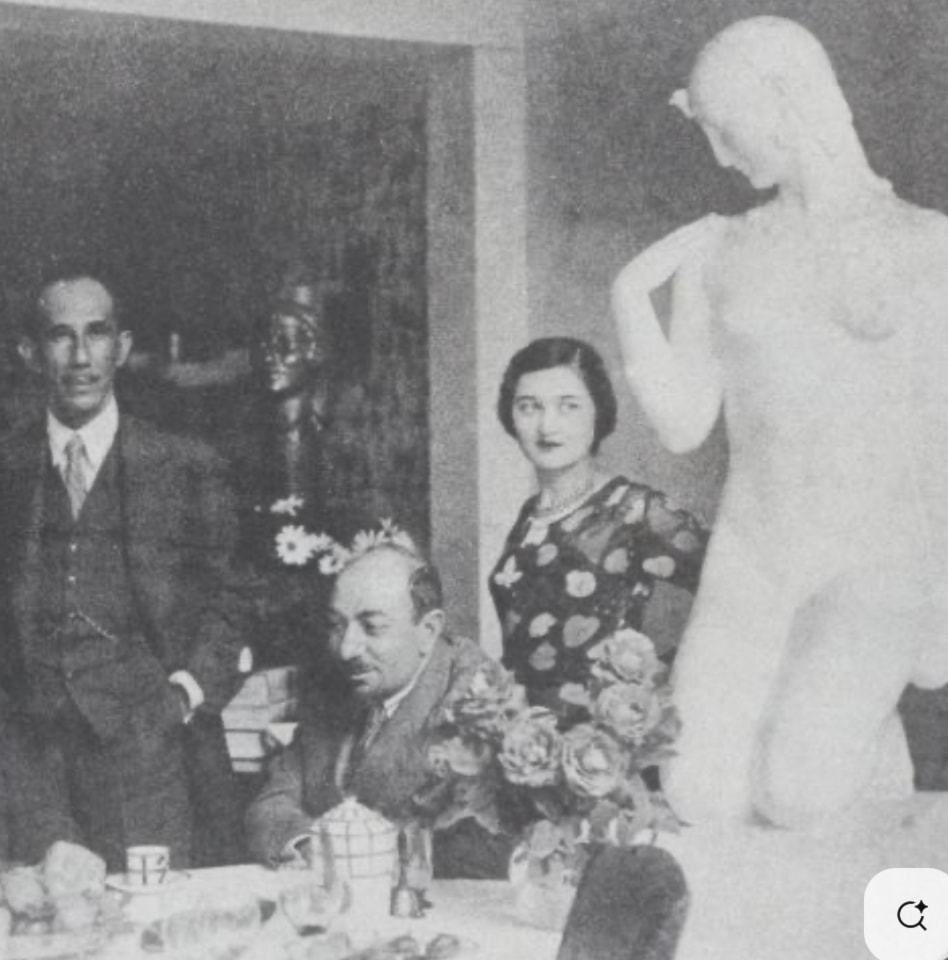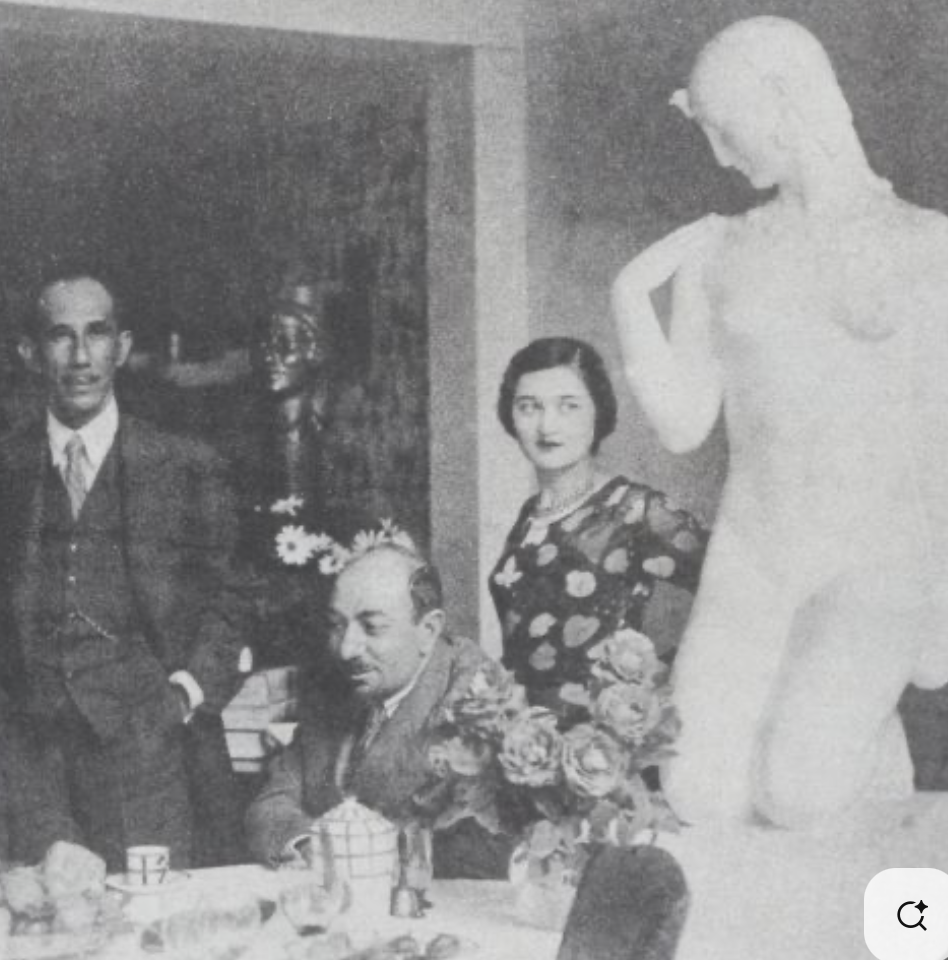
Mahmoud MOKHTAR
 The father of Modern Sculpture in Egypt, Mahmoud Mokhtar is regarded as the initiator of a break with the Academicism and Orientalism of the 19th century, in favor of a national art referring to the Pharaonic era. Deeply committed to the anti-imperialist nationalist movement, the artist dedicated his work to this cause.
The father of Modern Sculpture in Egypt, Mahmoud Mokhtar is regarded as the initiator of a break with the Academicism and Orientalism of the 19th century, in favor of a national art referring to the Pharaonic era. Deeply committed to the anti-imperialist nationalist movement, the artist dedicated his work to this cause.
Born in 1891 in Tunbarah, near the Al-Mahallah al-Kubra delta, Mahmoud Mokhtar came from an Egyptian farming family. It was this natural setting on the banks of the Nile that provided the raw material for his first modeling experiments, using the river's silt.
Attracted by artistic creation, in 1908 he chose to join the studio of Guillaume Laplagne, a French sculptor and the first director of the École des Beaux-Arts in Cairo, who taught him an academic style. After graduating in Egypt at the age of 21, he joined the École des Beaux-Arts in Paris, where he studied under Antoine Bourdelle and Jules-Félix Coutan. However, his masters' traditional method of studying after Greco-Roman antiquity did not suit him, prompting him to refer to his own Eastern artistic heritage, integrating Egyptian aesthetics into his creation. The beginnings of the sculptor's Parisian career remained difficult, forcing him to hold down several jobs in order to continue to devote himself to sculpture.
However, at the end of the First World War, his career was given a new boost when he became artistic director of the Musée Grévin, taking over from his first master Laplagne in Cairo.
In Paris during this period, the artist met Saad Zaghloul, Egyptian Prime Minister and leader of the Independence Party. This meeting was decisive for Mokhtar, who discovered the Egyptian Revolution of 1919 from France. Particularly affected, he chose to create a committed work, which he named Nahdat Misr, meaning “The Renaissance of Egypt”. His model was awarded a gold medal at the Grand-Palais exhibition the same year. His creation became the symbol of an emancipated contemporary Egypt. Translated into a monumental format, it was renamed “Le Réveil de l'Égypte” (The Awakening of Egypt) for political reasons, and inaugurated in the center of Bab el-Habib Square, then moved in front of Cairo University in 1928.
The sculptor died in 1934, leaving behind an important body of work whose legacy is preserved in the Mahmoud Mokhtar Museum in Cairo, opened in 1938.


